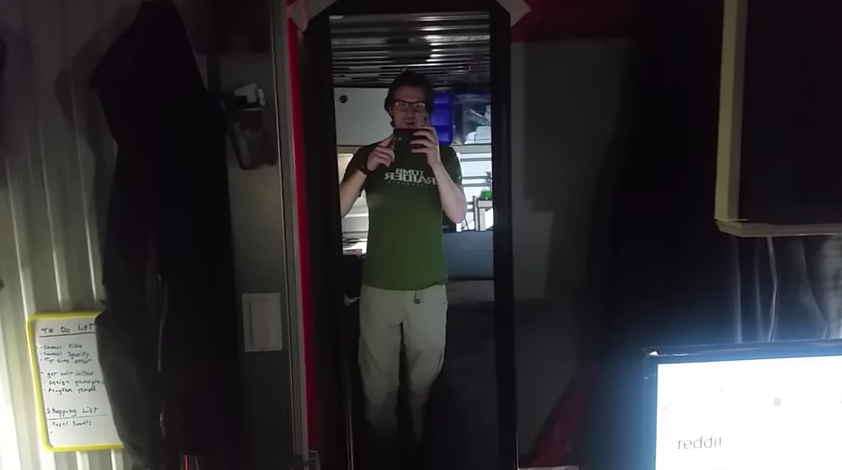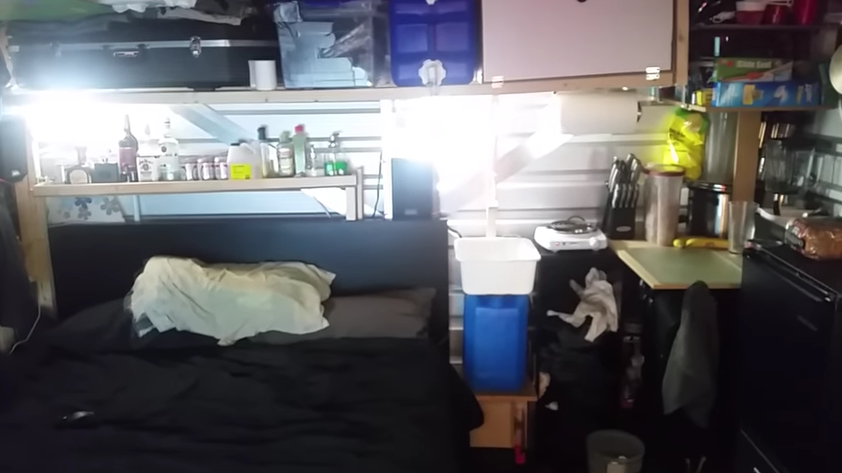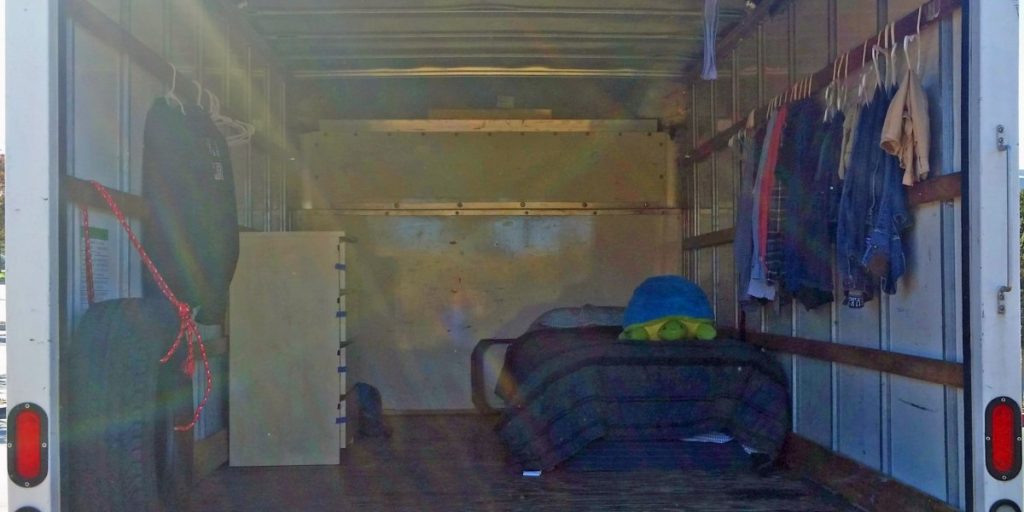It would seem Vancouver’s housing prices have gotten ridiculously out of hand when people are living in U-Haul storage units.
That’s exactly what one millennial man did for two months this past fall – only it was more so as a social experiment than to make a political point.
Basically, seeing how he transformed the space will probably give you some inspiration for your own tiny living space.
After returning home from a two-month trip hiking the West Crest Trail, Mike Lucignani, 32, decided to make a home for himself in the storage unit – complete with furniture, appliances and electricity.
He says he actually didn’t set out to make a statement about Vancouver’s high housing costs.
What he did do was share his handiwork on YouTube, taking to the platform to showcase how he turned the storage space into a living space (offering valuable insight for most of us). After giving up his apartment before the trip and putting his belongings in storage, Lucignani was in search of a new place to live. In the meantime, he was living in his car and frequenting the storage unit to check on his things.
Before too long, he was building shelves and installing a sink, making livable use of pretty much every square inch of the storage space.
“It just sort of evolved,” Lucignani told the CBC. “I thought I could sleep there too. It was a bit of an experience.”
And – before you go getting any ideas yourself – no, there’s nothing legal about it. As the CBC reports, Lucignani knew it was against the rules to sleep in a storage unit, but that didn’t stop him. Naturally, U-Haul wasn’t too impressed when they got wind of the video (and it didn’t take long for that to happen).
The video pans the storage locker to reveal a double bed, toaster oven, hot plate, sink and love seat.

“The point of the video was more to show what I had done with the place and the way I was able to build it,” he told the CBC.
Saving himself hundreds of dollars on rent, Lucignani paid roughly $200 per month for the storage space and another $5 for electricity. On the downside, of course, was the risk of being discovered.
While the YouTube video inspired an immediate response from U-Haul, Lucignani was apparently evicted long before he posted the video.
“Though the video insinuates he got away with doing this, this individual was caught and immediately evicted from the facility in November, two months before the video was posted,” said U-Haul spokesman Jeff Lockridge.
Sure, but it is also an example of minimalism at its finest.

Not to mention Lucignani, who works in IT – has a different version of the story, claiming he left the storage unit on his own accord because he found an apartment in Vancouver’s West End. He told the CBC that U-Haul’s version was the company’s own “spin.”
Naturally, people have associated his whole project with Vancouver’s high housing cost. But to Lucignani, it was all about showcasing his building and creative use of space.
He isn’t the first millennial to get creative with their “no fixed address” living spaces.
Back in 2015, a story broke about a 23-year-old Google employee who was living in a 128-square-foot truck in the company’s parking lot – saving 90 per cent of his income in the process. The alternative would be to dish out thousands each month for San Francisco’s sky-high housing costs.

Instead, the employee purchased a 2006 Ford truck with 157,000 miles on it for $10,000 – a price he paid up front with his signing bonus. Naturally, he too documented the unconventional living experience, creating a blog called, “Thoughts from Inside the Box.”
“I don’t actually own anything that needs to be plugged in,” he explains on his blog of his space, which housed a bed, dresser and a coat rack.
“The truck has a few built-in overhead lights, and I have a motion-sensitive battery-powered lamp I use at night. I have a small battery pack that I charge up at work every few days, and I use that to charge my headphones and cellphone at night. My work laptop will last the night on a charge, and then I charge it at work.”
With his phone bill covered by Google, his only out-of-pocket expense was $121 each month for his truck insurance. As for showers and food, that was all provided by Google. Because of this situation, he was able to actually take advantage of San Francisco’s offerings with the money he saved.
He isn’t the only millennial to respond to San Francisco’s insane rent houses with drastic measures.
According to a 2015 New York Times article, Bay Area millennials have even relocated to a popup village in Oakland made up entirely of shipping containers.
We’re not going to lie, it sounds a little tempting…
[ninja_form id=104]
[ad_bb1]

